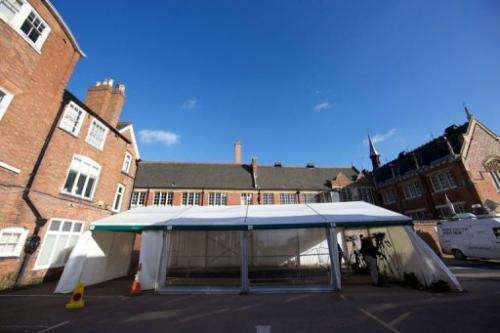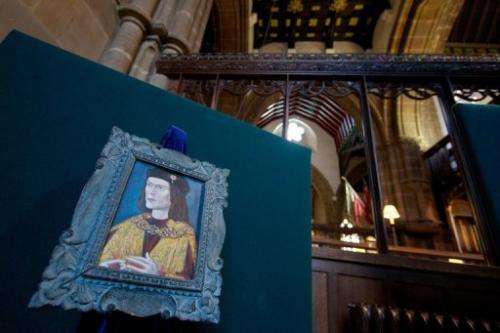Richard III's car park: An unlikely place for a king

Graffiti adorns the painted green wooden gates to the windswept car park in Leicester, the grey concrete overlooked by a local authority building badly in need of redecoration.
It is not the most auspicious place to find a king of England.
But researchers at the University of Leicester on Monday confirmed that a skeleton dug up from a municipal car park in the central English city was indeed Richard III, who died in battle in 1485.
"It's really weird to know that we've been parking on a king," said youth worker Maxine Gregory, as she surveyed the flapping white plastic tent erected over the site outside her office.
For over 500 years, England's last Plantagenet king lay there without a shroud or coffin, hastily buried in a hole so short that his head had to be propped up on his neck to fit in.
The skeleton has now been removed and all that remains is a rectangular hole surrounded by metal barriers, although the site is likely to become a tourist attraction as the city capitalises on its new favourite son.
Leicester was already proud of its royal connection, despite Richard's depiction in history as a villain.

A number of local pubs are named after the king and one local even admits to chatting to Richard by the river where he was once rumoured to have been thrown.
But the discovery of his remains is something new, and Gregory and her colleague Roz Best are excited to be part of history, even if the dig was a bit noisy. "I think we can give up a few parking spaces for a king," joked Best.
After his death at the Battle of Bosworth at the hands of the man who would become king Henry VII, Richard was buried in an unmarked grave in the church of the Franciscan Friary, known as Greyfriars.
But the building was razed by Henry VIII when he broke with the Catholic church in the 1530s, and Richard's grave disappeared—until a few years ago, when a writer researching a screenplay on the lost king found her way to the unremarkable car park close to Leicester Cathedral.
"I actually felt I was walking on his grave. And a few feet to my left there was a white letter 'R' painted on to the car park," said Philippa Langley, a member of the Richard III Society which helped fund the search.
"It was for 'Reserved', obviously, but I thought that's it. And you know where we found his remains? Virtually under that spot," she said.
Richard's remains were found on the first day of the archaeological dig in August 2012, although it would take another five months for the DNA extracted to confirm his identity.
The skeleton was well preserved, although the feet were missing, likely the result of redevelopment in the centuries after his death. The king's remains came close to being destroyed in the 19th century when a brick outhouse was built on the site.
Once they were removed, the bones were taken away for analysis, including for DNA.
Next year Richard will be formally re-interred in Leicester Cathedral in a ceremony that befits a king.
But for now, the skeleton lies in a case in an air-conditioned room at the university. As students flirt and work outside in the glass walled study rooms and libraries, inside a chaplain and two security officers keep silent watch.
Perhaps still not the resting place he would have liked, but better than a car park.
(c) 2013 AFP




















